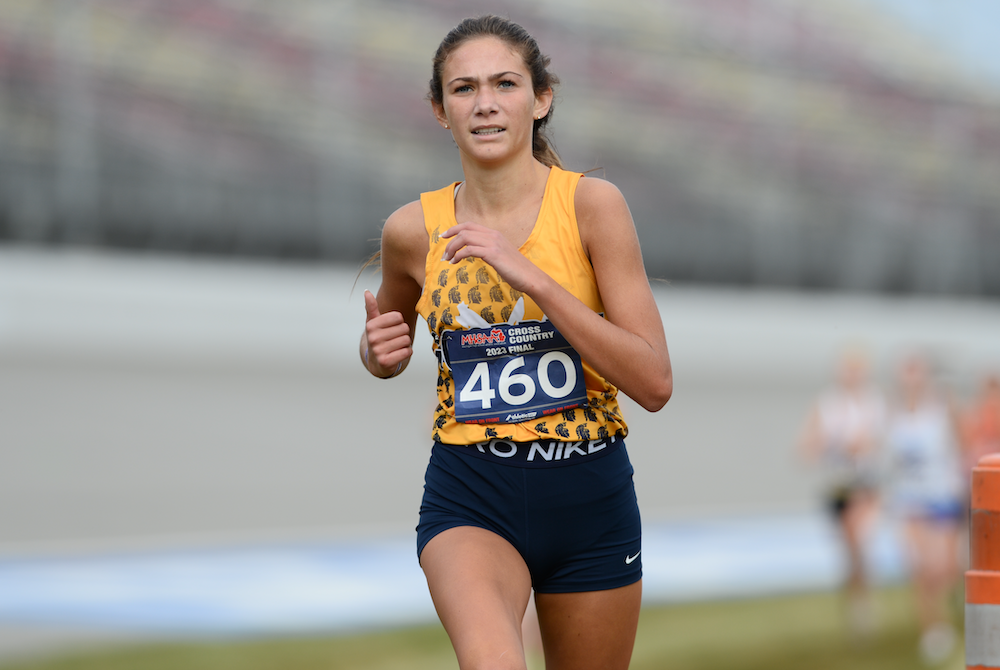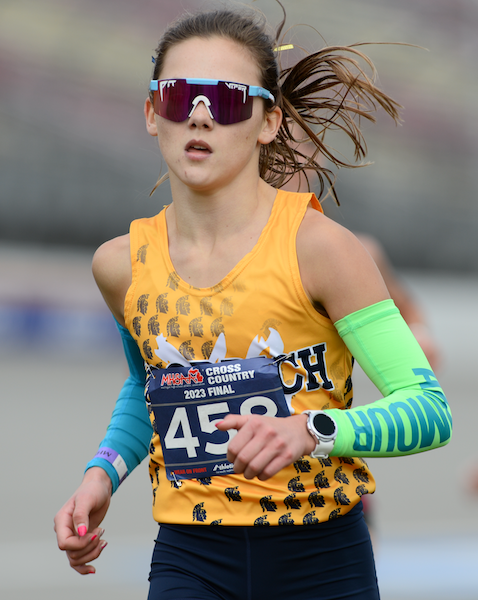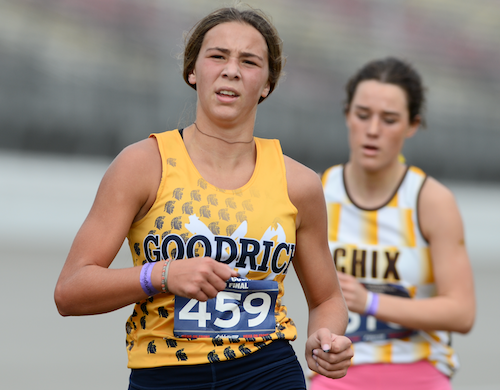
New Math: Division & Multiplication Problems
July 25, 2017
By Jack Roberts
MHSAA Executive Director
This is the second part in a series on MHSAA tournament classification, past and present, that will be published over the next two weeks. This series originally ran in this spring's edition of MHSAA benchmarks.
High school tournament classifications went viral before there was social media and most of us knew what “viral” meant.
Much as a virus infects computers today or has created epidemics of disease around the world for centuries, high school tournament classification – once introduced – tends to spread uncontrollably. Once started, it tends to keep expanding and rarely contracts.
While we are still some distance from providing every team a trophy as a result of expanding high school tournament classification across the country, there is criticism nevertheless that we are headed in that direction – a philosophy which is supposed to exist only in local youth sports for our youngest children.
Michigan could be blamed for all this. Michigan is generally accepted as the first state to provide different classifications for season-ending tournaments for different sized schools. It started a century ago. Today, every state has various classifications for its tournaments in most if not all sports. And it is a bit ironic that Michigan – creator of the classification chaos – more than most other states has kept the number of tournament classes or divisions under control.
Yes, there is evidence that tournament classifications have expanded over the years in Michigan, especially with the relatively recent introduction of tournaments in football and the late 1990s’ move from classes to divisions in most MHSAA tournaments. But the MHSAA Representative Council has held true to its word when it expanded the playoffs for football from four classes to eight divisions: this is needed because of unique factors of football, factors that exist in no other sport; and all other sports should be capped at a maximum of four classes or divisions.
Kentucky is the preeminent defender of single-class basketball. All of its 276 high schools compete for the single state championship for each gender. In Indiana, there are still open wounds from its move in 1998 from one to four classes for its 400 schools in basketball.
Multi-class tournaments have tended to increase the number of non-public school champions, which some states are trying to lower through enrollment “multipliers,” and also tend to increase the number of repeat champions, which some states are trying to affect with “success factors” which lift smaller schools into classifications for larger schools if they take home too many trophies.
While there is considerable evidence that state tournaments do as much bad as good for educational athletics, state associations persist in providing postseason tournaments because, on balance, the experiences are supposed to be good for student-athletes. And once we reach that conclusion it is just a small leap to believe that if the tournaments are good for a few, they must be better for more – which leads to creating more and more tournament classifications. One becomes two classes, then three, then four and so forth.
While the argument is that more classifications or divisions provides more students with opportunities to compete and win, it is undeniable that the experience changes as the number of tournament classifications expands. It is not possible for state associations to provide the same level of support when tournament classifications expand to multiple venues playing simultaneously. For example, there is less audio and video broadcast potential at each venue, and less media coverage to each venue. Focus is diluted and fans diminished at each championship.
No one can argue reasonably that today's two-day MHSAA Football Finals of eight championship games has the same pizazz as the one-day, four-games event conducted prior to 1990.
In some states the number of divisions has grown so much that it is difficult to see much difference between the many season-ending state championship games and a regular-season event in the same sport.
It is a balancing act. And Michigan has been studying that balance longer than any other state, and charting a steadier course than most.
Addition by Division
The shift to Divisions for MHSAA Tournament play in numerous sports has added up to a greater number of champions for teams and individuals across the state. Following are the sports currently employing a divisional format, and the procedures for determining enrollment and classification.
In 23 statewide or Lower Peninsula tournaments, schools which sponsor the sport are currently divided into nearly equal divisions. They are:
- Baseball - 4 Divisions
- Boys Bowling - 4 Divisions
- Girls Bowling - 4 Divisions
- Girls Competitive Cheer - 4 Divisions
- LP Boys Cross Country - 4 Divisions
- LP Girls Cross Country - 4 Divisions
- LP Boys Golf - 4 Divisions
- LP Girls Golf - 4 Divisions
- Ice Hockey - 3 Divisions
- Boys Lacrosse - 2 Divisions
- Girls Lacrosse - 2 Divisions
- Boys Skiing - 2 Divisions
- Girls Skiing - 2 Divisions
- LP Boys Soccer - 4 Divisions LP
- Girls Soccer - 4 Divisions
- Girls Softball - 4 Divisions
- LP Boys Swimming & Diving - 3 Divisions
- LP Girls Swimming & Diving - 3 Divisions
- LP Boys Tennis - 4 Divisions
- LP Girls Tennis - 4 Divisions
- LP Boys Track & Field - 4 Divisions
- LP Girls Track & Field - 4 Divisions
- Wrestling - 4 Divisions
Lists of schools for each division of these 23 tournaments are posted on MHSAA.com approximately April 1. Listings of schools in Upper Peninsula tournaments for their sports are also posted on MHSAA.com. The lists are based on school memberships and sports sponsorships in effect or anticipated for the following school year, as known to the MHSAA office as of a date in early March.
In football, the 256 schools which qualify for MHSAA 11-player playoffs are placed in eight equal divisions annually on Selection Sunday. Beginning in 2017, the 8-player divisions will be determined in a like manner on Selection Sunday as well, with 32 qualifying schools placed in two divisions.
Schools have the option to play in any higher division in one or more sports for a minimum of two years.
The deadlines for "opt-ups" are as follows:
- Applications for fall sports must be submitted by April 15
- Applications for winter sports must be submitted by Aug. 15
- Applications for spring sports must be submitted by Oct. 15
Subsequent to the date of these postings for these tournaments, no school will have its division raised or lowered by schools opening or closing, schools adding or dropping sports, schools exercising the option to play in a higher division, or approval or dissolution of cooperative programs.
When the same sport is conducted for boys and girls in the same season (e.g., track & field and cross country), the gender that has the most sponsoring schools controls the division breaks for both genders.

Goodrich Enjoying Every Moment of Pursuing 1st Finals Title since 2005
By
Paul Costanzo
Special for MHSAA.com
August 23, 2024
Kamryn Lauinger and her Goodrich girls cross country teammates have a very big but attainable goal heading into the season: Stand atop the podium as Division 2 Finals champions at Michigan International Speedway on Nov. 2.
 The Martians were third a year ago, return their entire top seven, and added a top-flight freshman to that already stacked lineup.
The Martians were third a year ago, return their entire top seven, and added a top-flight freshman to that already stacked lineup.
But you won’t catch Lauinger and the Martians looking ahead; they’re too busy enjoying every moment together along the way.
“I don’t want the season to go by fast,” said Lauinger, who placed 10th at the 2023 Finals. “It’s my last year, and we’re all kind of taking it all in, working hard together and preparing for what we can accomplish.”
Goodrich entered the season as the top-ranked team in Lower Peninsula Division 2, and with one meet under its belt has lived up to that ranking. The Martians won the Unionville-Sebewaing Invitational on Aug. 19 with a perfect score (15) – 1. Lauinger; 2. Jordan; 3. Sophomore Alivia Ottinger; 4. Sophomore Claire Brown; 5. Senior Avery Byrne.
Their sixth (freshman Kayla Shellenbarger) and seventh (sophomore Baylor Lauinger) runners finished sixth and seventh.
 “It’s definitely exciting – I think we’re going to have a really great season,” said senior Layla Jordan, the reigning LP Division 2 Track & Field 800-meter champion. “Also, at the same time, we’re taking the same approach. We’re not changing anything we do. We’re excited, but we’re trying not to get too excited to the point where we look ahead. It’s really great to know that we have such great depth. Everybody is working for the same goal, and we all can just rely on one another.”
“It’s definitely exciting – I think we’re going to have a really great season,” said senior Layla Jordan, the reigning LP Division 2 Track & Field 800-meter champion. “Also, at the same time, we’re taking the same approach. We’re not changing anything we do. We’re excited, but we’re trying not to get too excited to the point where we look ahead. It’s really great to know that we have such great depth. Everybody is working for the same goal, and we all can just rely on one another.”
They’re also relying on their self-described “computer geek” of a coach, Al Warden, who has built a season-long plan he said is backed by science and computer programs – along with his own knowledge.
“I tell the kids all the time, this is not about going out there and being faster than everybody else,” Warden said. “You have to be smarter than everybody else. It’s science-based. Every single practice is science-based.”
Warden creates his training calendar by starting at Nov. 2 and building backward. That includes more than just workouts, as one of the items on next week’s agenda is buying new shoes.
“The more determined runners, they’re at that 400-mile mark,” he said. “They need new shoes, because they wore them out. That’s right in my schedule so I don’t have to remember to remember it.”
Warden’s plans are clearly getting results, and his runners have bought in completely.
“It definitely helps, because we know he cares,” Lauinger said. “I do like knowing all of his science – he does a lot of research. I like it. I like how he does it.”
While Warden is focused on the science of training, he hasn’t forgotten that it also needs to be fun if he’s going to get the most out of his runners.
So, mixed in with the temple runs and 10-mile days around Top Hill Farm are donut runs, slushie runs, pizza parties and swimming parties. There’s also a “no runner left behind” policy that ensures the top runners turn back and finish with the next group, reinforcing a culture of togetherness.
 “I think it’s just that we all enjoy it,” Jordan said. “You have to love what you do, and we all love running. It’s really cool to be great at something, but it’s not as fun to be great alone. We all want to be great.”
“I think it’s just that we all enjoy it,” Jordan said. “You have to love what you do, and we all love running. It’s really cool to be great at something, but it’s not as fun to be great alone. We all want to be great.”
If the Martians were to finish off the season with a Finals title, it would be the first since they won three straight from 2003-05.
As Warden said, “it’s time for Goodrich to win it again.”
His runners agreed.
“It would mean to me that I got to do something that’s going to be long-lasting,” Kamryn Lauinger said. “To have the little runners at Goodrich looking up to us. Just to have something long-lasting and people knowing that I came in here and did what I needed to do and left a mark.”
A Finals title would also allow the Martians to partake in one of their favorite traditions – treating a championship trophy like the Stanley Cup, and allowing a team member to take it home with them.
Who gets each trophy is normally a pretty easy decision, Jordan said, as they’re often on the same page about who deserves it on a given day.
There would be absolutely no debate if they win the big one: Warden.
“He’s the reason that we’re up there anyway,” Jordan said. “We couldn’t have done it without him.”
 Paul Costanzo served as a sportswriter at The Port Huron Times Herald from 2006-15, including three years as lead sportswriter, and prior to that as sports editor at the Hillsdale Daily News from 2005-06. He can be reached at [email protected] with story ideas for Genesee, Lapeer, St. Clair, Sanilac, Huron, Tuscola, Saginaw, Bay, Arenac, Midland and Gladwin counties.
Paul Costanzo served as a sportswriter at The Port Huron Times Herald from 2006-15, including three years as lead sportswriter, and prior to that as sports editor at the Hillsdale Daily News from 2005-06. He can be reached at [email protected] with story ideas for Genesee, Lapeer, St. Clair, Sanilac, Huron, Tuscola, Saginaw, Bay, Arenac, Midland and Gladwin counties.
PHOTOS (Top) Goodrich’s Kamryn Lauinger pushes through the final stretch to finish 10th at last year’s LPD2 championship race at MIS. (Middle) Layla Jordan races for the finish line in placing 27th last season. (Below) The Martians’ Baylor Lauinger and Zeeland East’s Meredith Cook charge toward the finish. (Click for more from RunMichigan.com.)

